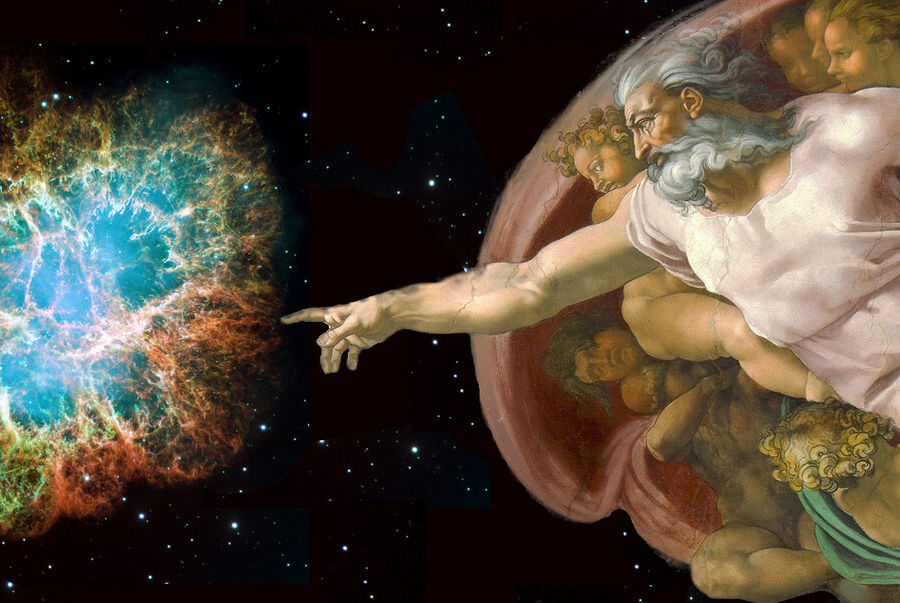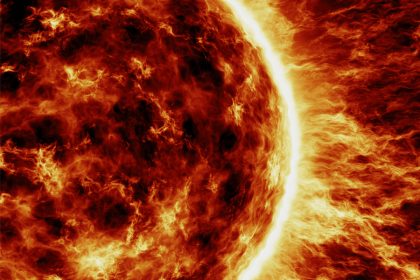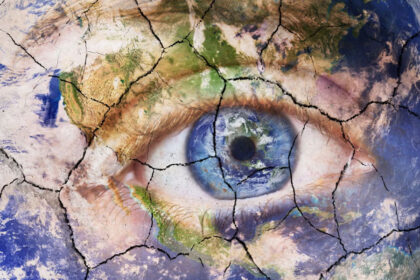“Science without religion is lame, religion without science is blind.” Einstein’s essay “Science and religion,” published in 1954.
This quote is often used to show both Einstein’s religiosity and his belief in the compatibility: the mutual interdependence of science and religion.
Hi readers,
Here is the promised new series encompassing science and religion.
Introduction
The concepts of “science” and “religion” are a recent invention. “religion” emerged in the 17th century in the midst of colonization, globalization, and as a consequence of the Protestant reformation (The Protestant Reformation was a religious reform movement that swept through Europe in the 1500s. It resulted in the creation of a branch of Christianity called Protestantism: a name used collectively to refer to the many religious groups that separated from the Roman Catholic Church due to differences in doctrine) while “Science” emerged in the 19th century in the midst of attempts to narrowly define those who studied nature.
Both offer explanations for why life and the universe exist. Science relies on testable empirical evidence and observation while religion relies on subjective belief in the creator. Their relationship has been characterized by conflict, especially on the issue of origins (creation vs evolution), whereas the reality is that science and religion are complementary to each other, and the relationship has been dynamic.
Both rely on faith. In science, faith is required in the existence of an orderly universe that follows laws that can be discovered and understood. In religion, faith is required in the existence of divinity and God or Holy beings and the teachings of religious texts.
The conflict between science and religion is fairly recent and originated in the last quarter of the 19th century after the Darwin’s book on evolution. Almost 56% of Americans think there is a conflict between science and religion, but it is more common among the religiously unaffiliated or people who are less religious.
Those who have not deeply studied Islam and Islamic philosophy view Buddhism as exceptionally compatible with science and reason, or even that it is a kind of science “science of the mind” (a book by Ernest Holmes which proposes a science with a new relationship between humans and God) or a “scientific religion” that offer descriptive study of religion that examines all religions phenomenologically, historically, psychologically, and sociologically.
Hinduism is the world oldest religion dating back more than 4,000 years and is the third largest religion (with about 900 million followers) after Christianity and Islam. Approximately 95 percent of the world’s Hindus live in India whereas Muslim lives in 52 different countries. Studies in the 21st century suggest that, in terms of percentage and worldwide spread, Islam is the fastest-growing major religion in the world.
Science is the pursuit and application of knowledge and understanding of the natural and social world following a systematic methodology based on evidence. Scientific methodology includes objective observations such as measurement and data using mathematics as a tool (but not necessarily) and evidence. It is an open belief system as the data collected by scientists are open to testing by others. Research findings can thus be criticized. According to Popper’s (an Austrian-British philosopher, who is known for his rejection of the classical philosophy of scientific method to develop scientific theories) views on the scientific method in favour of empirical falsification, the process of scientist’s critically scrutinizing findings of other scientists is fundamental to the scientific method.
Religion on the other hand is defined as a social, cultural system of designated behaviors and practices, morals, beliefs, world views, texts, sanctified places, prophecies, ethics, or organization that relates humanity to supernatural, mystical, inspirational, and spiritual elements however, there is no scholarly consensus over what precisely constitutes a religion.
Scientism is the opinion that science and the scientific method are the best way to render truth about the world and reality. Science and Scientism are not the same. Science is a method for asking questions about the world. Scientism is just one philosophy among many about the relationship between human beings and their experiences. It is the view that science is the only objective means by which to determine what is true or an unwarranted application of science in situations that are not amenable to scientific inquiry. One can value the former while rejecting the latter.
Science in the medieval era
This era was characterized by the science developed and practiced during the Islamic Golden Age under the:
- Umayyads of Cordoba (Caliphate of Córdoba was an Islamic state ruled by the Umayyad dynasty from 929 to 1031. In 750, the Umayyad dynasty in Syria fell to the Abbasids. The one surviving member, ‘Abd al-Rahman escaped to Spain and established autonomous rule there. He rebuilt Córdoba, as capital city to reflect his Syrian heritage and the Byzantine roots of the Umayyad capital of Damascus. It was one of the most successful state. Córdoba was enlarged and filled with palaces and mosques. The city’s woven silks and elaborate brocades, leatherwork, and jewelry were prized throughout Europe and the East, and its imitators rivaled Christian brothers in the production of religious works. The new Islamic territories in Spain, referred to as Al-Andalus by Muslims, were administered by a provincial government centered in Cordoba. The capital became the intellectual center of Europe, with libraries, schools, and mosques. The Great Mosque of Cordoba was the focus of many emir’s attention. It was large enough to hold 40,000 people, which served both as the city’s main prayer place and the university, where the intellectual elite of the western Islamic world went to study. I have the honor of visiting that grate mosque in 2011, of offering the Nwafils there and prayers with teary eyes because I was sitting in front of a door (an indicator of a place where prayer leader used to sit for religious sermons) in a walled room because it was no more Cordoba Mosque but Cordoba Cathedral (pl. see figures). I roamed around the streets, and I swear, I could smell as if the Muslims were roaming along with me because the Muslims footprints were still there in Cordoba’s streets.


The Cordoba city and the mosque Arches within the prayer hall


The mosque cathedral The grate Mosque
In 711 Muslim forces invaded and in seven years conquered the Iberian peninsula. It became one of the great Muslim civilizations, reaching its summit with the Umayyad caliphate of Cordovain the tenth century. Muslim rule declined after that and ended in 1492 when Granada was conquered.
Cordoba was a world’s renowned place for its leather manufacturing sites and silversmiths and the place of birth of the grand Roman philosopher Seneca. Cordoba possess the world’s largest olive plantations. During the 9th and 10th centuries, Córdoba was Europe’s most sophisticated and cosmopolitan city. It was a place where Jews, Arabs and Christians all practiced their beliefs without persecution and in which remarkable advances were made in every area of human endeavor. Today, as of 2022, Catalonia is the only city harboring the highest number of Muslims with more than 610,000),
- Abbadids of Seville (Abu Al-Qassim Muhammad ibn Abbad (1023–1042), founded the house in 1023. Abbadids was an Arab Muslim dynasty which arose in Al-Andalus on the downfall of the Caliphate of Cordoba),
- the Samanid (Samanid Empire was a Persianate Sunni Muslim empire of Iranian Dehqan origin. Samanid dynasty, (819–999 CE), arose in what is now eastern Iran and Uzbekistan. It was known for the impulse that it gave to Iranian national sentiment and learning),
- the Zodariids (or Ziyarids or Āl-e Ziār) dynasty was an Iranian dynasty of Gilaki origin that ruled Tabaristan from 931 to 1090 during the Iranian Inter-mezzo period of history which saw the rise of various native Iranian Muslim dynasties in the Iranian plateau after the 7th-century Muslim conquest of Iran and the fall of Sasanian Empire.),
- The Buyids of Persia (was a Shia Iranian dynasty of Daylamite origin, which ruled Iraq and central and southern Iran from 934 to 1062.), and
- Abbasid Caliphate (the third caliphate to succeed the Islamic prophet Muhammad (peace be upon him). It was founded by a dynasty descended from the prophet’s uncle, Abbas ibn Abdul Muttalib, from whom the dynasty takes its name. The Abbasid caliphs established the city of Baghdad in 762 CE. It became a center of learning and the hub of what is known as the Golden Age of Islam and covering the period between 786 and 1258. The Abbasid line of rulers were Sunni Muslim who re-centered themselves in the capital of Cairo in 1261.
Islamic scientific achievements encompassed a wide range of subject areas, especially astronomy, mathematics and medicine, chemistry, botany, agronomy, geography, and cartography (map making), ophthalmology, pharmacology, physics, and zoology.
Medieval Islamic science had practical purposes as well as the goal of understanding. For example, astronomy was useful for determining the Qibla: the direction in which to pray, botany had practical application in agriculture, as in the works of Ibn Bassal, and Ibn-al Awwamm and geography enabled Abu-Zayd al-Balkhi to make accurate maps. Islamic mathematicians such as Al-Khwarizmi, Avicenna, and Jamshed al-Kashi made advances in algebra, trigonometry, geometry, and Arabic numerals. Islamic doctors described diseases like smallpox, measles and and challenged classical Greek medical theory. Al- Biruni, Avicenna and others described the preparation of hundreds of drugs made from medicinal plants and chemical compounds. Islamic physicists such as Ibn Al-Haytham, Al-Biruni and others studied optics and mechanics as well as astronomy and criticized Aristotle’s view of motion.
During the Middle Ages, Islamic science flourished across a wide area around the Mediterranean Sea and in places or areas other than the nearest or most obvious one for several centuries in a wide range of institutions.
That is all for now dear readers.
See you next week with more details about the work of science by Muslim scientists.
Till then, take care,
Bye.





